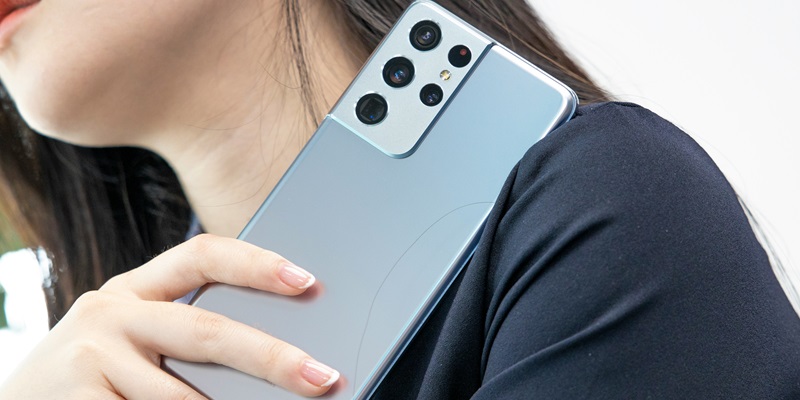In the competitive world of smartphone cameras, Samsung has consistently been at the vanguard, pushing the boundaries of what’s possible. By expertly blending state-of-the-art camera hardware with advanced photography software, Samsung sets new benchmarks for mobile photography, ensuring users capture life’s moments in stunning clarity and detail. This commitment to excellence has cemented the South Korean tech titan’s status as an industry leader.
The journey of Samsung’s camera evolution reflects their dedication to innovation. By incorporating features like high-resolution sensors, optical zoom capabilities, and AI-powered functions, they’ve transformed smartphones into professional-grade cameras that fit in the palm of your hand. Each new Samsung device tends to arrive with features that surprise and delight users, from low-light performance enhancements to super-steady video stabilization.
Continuously experimenting with new technologies, Samsung invests heavily in research and development, ensuring its camera phones not only meet but also anticipate consumer expectations. Their smartphones have empowered users to produce content that rivals that of traditional cameras, heralding a new era for mobile photography. All these efforts keep Samsung riding high as a beacon of innovation, redefining the landscape and inspiring the entire mobile industry to reach higher.
Understanding Camera Specifications
The Role of Megapixels in Image Quality
Megapixels often steal the spotlight when discussing camera specifications, influencing consumers’ perceptions of image quality. However, this number, representing the resolution of images, is just one piece of the puzzle. A higher megapixel count means that pictures can be printed at larger sizes or allow for more substantial cropping without losing detail. Despite this advantage, the physical size of the camera’s sensor also plays a critical role as it impacts the amount of light captured, affecting image clarity and noise levels, particularly in low-light scenarios.
Furthermore, the quality of the pixels themselves is paramount. Larger pixels can capture more light, which leads to better image quality, especially in darker environments. Samsung addresses this with larger sensors and pixel binning technologies, ensuring that megapixel count complements, rather than compromises, the overall capture experience.
Aperture and Sensor Size
Samsung has shown a thorough understanding of the importance of aperture sizes in its camera phones. The aperture determines how much light reaches the sensor, influencing not only low-light performance but also the depth of field in photographs. A wider aperture (represented by a smaller f-stop number) allows more light to hit the sensor, improving low-light photography and enabling a shallow depth of field, which can be used to create dramatic, focused subjects against a blurred background.
Equally important is the sensor size. A larger sensor can gather more light, which considerably improves image quality and reduces graininess in photos. Samsung has consistently worked on enlarging its smartphone camera sensors, ensuring that they can perform exceptionally well, irrespective of lighting conditions. Balancing sensor size with a suitably wide aperture, Samsung devices manage to capture detailed and visually appealing images.
Advanced Camera Technologies
Samsung’s Software Prowess
Samsung’s camera software is another forte, enhancing the tangible aspects of their smartphone cameras. Features such as Single Take and Director’s View reveal Samsung’s dedication to providing versatile photography tools that cater to various scenarios. Single Take allows users to capture a series of photos and short videos with just one tap, utilizing AI to suggest the best shots. This feature epitomizes the notion that the best camera is the one that empowers users to take great pictures effortlessly.
Director’s View, on the other hand, is a testament to Samsung’s acknowledgment of video’s rising prominence. This feature allows users to capture video from multiple lenses simultaneously, providing dynamic storytelling possibilities. This kind of software sophistication further embellishes the hardware capabilities of Samsung’s phones, making the act of capturing memories as rich and nuanced as the moments themselves.
Zoom Capabilities and Night Mode
Samsung is at the forefront of mobile photography with their advanced optical zoom technology found in devices like the Galaxy S21 Ultra. This feature uses physical lens movement, allowing high-magnification shots without sacrificing image quality—unlike digital zoom, which can degrade the photo. Samsung’s telephoto lenses are key to capturing crisp images from afar.
Low-light photography is another area where Samsung devices excel. Their night mode uses a combination of well-designed hardware and sophisticated software. Cameras with wide-aperture lenses and sizeable sensors work alongside algorithms that minimize noise and adjust colors and contrasts meticulously. This mode generally takes multiple exposures and merges them, showcasing Samsung’s skill in computational photography to produce clear nighttime images.

